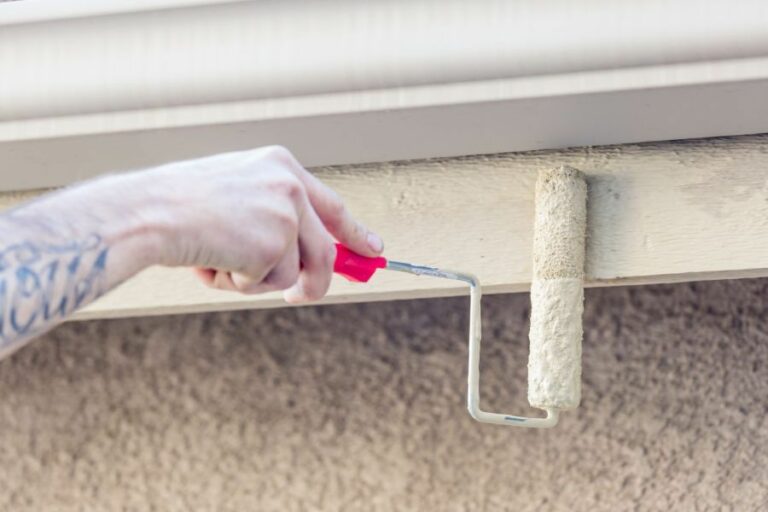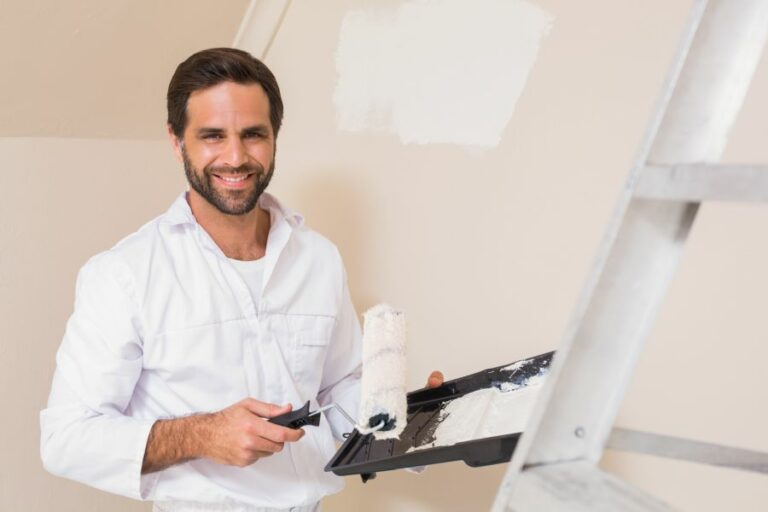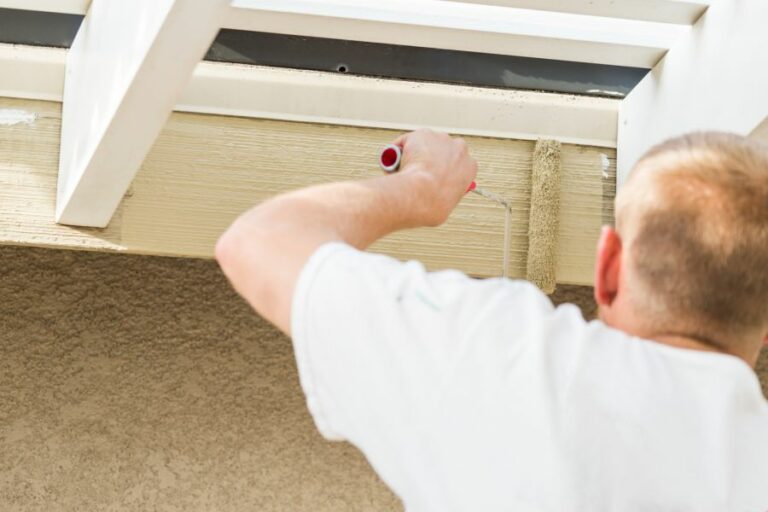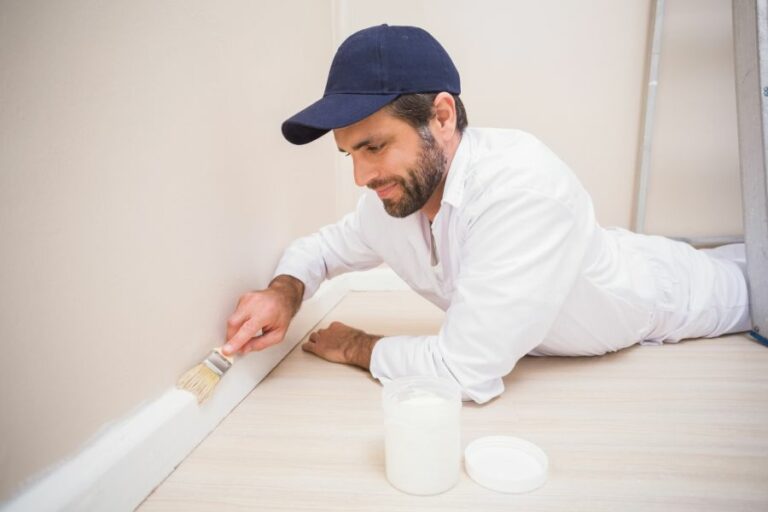Tips For Chemical Cleaning Of Interiors. What Pros Say
Cleaning the interiors of your home or workplace can sometimes feel like stepping into the world of chemistry. With so many different cleaning agents and methods, knowing what’s best for each situation is crucial. But fear not; we’re here to help you navigate this maze of chemical cleaning of interiors, with tips and tricks to ensure a safe and efficient approach.
Tips for chemical cleaning of interiors:>
To effectively clean interiors using chemical products, prioritize safety measures, choose appropriate cleaning agents, and follow proper techniques. Wear personal protective equipment, read labels, use eco-friendly products, ensure ventilation, and store chemicals safely. Select chemicals based on surfaces, stains, and desired results. Clean from top to bottom, use suitable tools, follow dwell time, rinse, dry, and sanitize as needed. Perform periodic deep cleaning, including carpets, air ducts, tiles, and windows.

Explore our extensive guide on chemical cleaning for interiors, where we unveil the best practices, insider tips, and cautions to achieve a sparkling clean environment. Don’t miss out! Read on to revolutionize your cleaning game.
Contents
- 1 Effective Chemical Interior Cleaning Techniques
- 2 Expert Detailers’ Interior Cleaning Tools and Products
- 3 Professional Car Interior Cleaning Solutions
- 4 Proper Application of Chemical Guys Interior Cleaner
- 5 Optimal Car Interior Cleaning Methods
- 6 Avoid These Mistakes When Cleaning Car Interiors
- 7 Common Chemicals Used by Auto Detailers
Effective Chemical Interior Cleaning Techniques
• Introduction
Chemical cleaning of interiors is essential for maintaining a clean and healthy space. Over time, dirt, dust, and contaminants can build up on surfaces and in air ducts, causing health issues and lowering the overall quality of the indoor environment.
• Safety First: Proper Use of Chemical Cleaning Products
Using chemical cleaning products safely is a top priority. Follow these guidelines to ensure safe and effective cleaning:
- Wear Personal Protective Equipment (PPE): Always wear gloves, goggles, and a mask while handling hazardous substances.
- Read and Follow Labels: Always read and follow the instructions printed on the chemical cleaning product’s label. This will provide guidance on the appropriate application and precautions for each chemical.
- Choose Environmentally Friendly Products: Consider using green cleaning products that are eco-friendly and have reduced health risks associated with their use. Environmental Working Group (EWG) offers a guide on safer cleaning products.
- Proper Storage: Store chemical cleaning products in a cool, dry place out of reach of children and pets. Keep containers sealed to avoid spills and fumes.
- Ventilation: Ensure that the area being cleaned is well-ventilated to prevent the buildup of toxic fumes.
• Preparing the Space
Before starting the chemical cleaning process, prepare the space by:
- Removing furniture and personal items: Clear the area of any non-washable items, such as electronics, books, and personal belongings.
- Covering sensitive surfaces: Protect areas that may be susceptible to damage due to cleaning agents or water exposure. This includes electrical outlets, wood floors, and delicate fabrics.
- Vacuuming: Vacuuming the space thoroughly ensures that dust and dirt are removed, making chemical cleaning more effective.
• Choosing the Right Chemical Cleaning Products
Selecting the appropriate chemical cleaning product depends on the type of surface, severity of the dirt or stains, and the desired outcome. Here are some common cleaning agents and their recommended uses:
- Alkaline Cleaners: Effective for removing greasy and oily soils, alkaline cleaners work well on countertops, kitchen floors, and walls.
- Acidic Cleaners: Useful for removing mineral deposits, rust, and other inorganic stains, acidic cleaners are suitable for cleaning bathroom surfaces and descaling pipes.
- Enzymatic Cleaners: Utilizing enzymes to break down organic materials, these cleaners are excellent for removing protein-based stains, such as blood or food, on carpets and upholstery.
- Disinfectants: Designed to kill germs and bacteria, disinfectants are essential for areas prone to microbial contamination, such as bathrooms and kitchens.
- Degreasers: Specifically formulated to dissolve grease buildup, degreasers are commonly used in kitchens and industrial equipment.
- Odor Control: Products that neutralize or eliminate unpleasant odors in carpets, upholstery, and other fabrics.
Remember to always do a small spot test when using a new cleaning product to ensure it does not damage or discolor the surface.
• Proper Cleaning Techniques
Using the correct cleaning techniques ensures a thorough and efficient cleaning process. Follow these tips:
- Start from Top to Bottom: Begin by cleaning higher surfaces and then work your way down, ensuring that dust and dirt do not fall onto already cleaned areas.
- Use Appropriate Tools: For example, a soft-bristle brush is ideal for gentle cleaning, while a scraper may be needed for stubborn dirt or stains.
- Follow the Dwell Time: Allow the cleaning solution to sit on the surface for the recommended time, as this will enable the chemicals to break down stains and dirt effectively.
- Rinse and Dry: After cleaning, thoroughly rinse the surface with clean water to remove residual chemical, then dry with a clean cloth or allow to air dry.
- Sanitize: For areas that require sanitization, such as bathrooms and kitchens, be sure to use an appropriate disinfectant to eliminate germs and bacteria.
• Periodic Deep Cleaning
In addition to regular cleaning, periodic deep cleaning is necessary to ensure a healthy and clean environment. It is recommended that deep cleaning be undertaken at least twice a year, often as part of a spring and fall cleaning regimen.
Deep chemical cleaning can include:
- Carpet and Upholstery Cleaning: Hire a professional or rent a carpet cleaner to deep clean carpets and upholstery.
- Air Duct Cleaning: Clean air ducts to remove dirt, allergens, and mold that can accumulate over time, improving indoor air quality.
- Tile and Grout Cleaning: Deep clean tile and grout to remove persistent dirt and stains, as well as prevent mold and mildew growth.
- Window Washing: Professional window washing services can help remove dirt, dust, and grime from glass surfaces, improving natural light and visibility.
• Conclusion
Maintaining a clean and healthy interior requires proper chemical cleaning techniques, appropriate product selection, and regular attention. By following the expert tips provided in this article, you can ensure that your space remains safe and welcoming for all occupants.
Expert Detailers’ Interior Cleaning Tools and Products
As a seasoned professional in the car detailing industry, I am often asked: “What do detailers use to clean interior?” Whether you’re a novice or an experienced enthusiast, there’s always something new to learn about interior detailing.
• Essential Tools for Interior Detailing
– Vacuum Cleaners
A high-quality vacuum cleaner is the first tool in any detailer’s arsenal. When cleaning car interiors, professionals often recommend using a wet/dry vacuum cleaner. These powerful machines can handle dry debris, such as soil and pet hair, as well as liquid spills.
– Brushes
A variety of brushes are necessary to reach every nook and cranny of the car interior. Some common brushes used in interior detailing include:
- Crevice Brush: A small, thin brush that’s perfect for removing dust and dirt from tight spaces, such as air vents and button crevices.
- Upholstery Brush: A medium-sized brush with soft bristles that are gentle enough for use on fabric surfaces, such as seats and carpets.
- Leather Brush: A specialized brush designed for cleaning leather surfaces without causing scratches or damage.
– Microfiber Towels
Microfiber towels are the go-to choice for professionals because they’re gentle on surfaces and incredibly absorbent. They’re perfect for cleaning, drying, and polishing various interior surfaces.
Always have a good supply of clean microfiber towels on hand to avoid cross-contamination between different areas of the car.
• Chemicals Used in Interior Detailing
– All-Purpose Cleaner (APC)
An all-purpose cleaner is a versatile cleaning solution that is suitable for use on a wide range of surfaces, such as plastic, vinyl, and fabric. Many professionals recommend using a diluted APC, as it can be strong enough to remove dirt and grime without causing damage to delicate surfaces.
– Carpet and Upholstery Cleaner
When dealing with stained or heavily soiled carpets and upholstery, a dedicated carpet and upholstery cleaner is a must-have.
Many carpet cleaners are designed to work in conjunction with hot water extraction machines, which use hot water and high-pressure suction to remove deeply embedded dirt.
– Leather Cleaner and Conditioner
Cleaning and protecting leather surfaces require specialized products. A quality leather cleaner is essential for removing dirt and grime from leather seats without causing damage or discoloration.
After cleaning, a good leather conditioner helps restore and maintain the softness and suppleness of the leather.
– Glass Cleaner
A streak-free glass cleaner is vital for achieving a perfectly clear and clean interior glass. Many detailers recommend using an ammonia-free glass cleaner, as ammonia can cause damage to tinted windows.
• Interior Detailing Techniques
– Cleaning Plastic and Vinyl Surfaces
Begin by vacuuming the entire interior to remove loose debris. Next, spray a diluted APC solution onto a microfiber towel and gently wipe down all plastic and vinyl surfaces, such as the dashboard, door panels, and console. For tighter spaces, use a crevice brush to help dislodge dirt.
– Cleaning Carpets and Upholstery
Vacuum the carpets and upholstery to remove any loose debris. Pre-treat stubborn stains with a carpet cleaner, allowing it to dwell for a few minutes before agitating with an upholstery brush. Then, use a hot water extraction machine or a wet/dry vacuum to lift away dirt and cleaning solution.
– Cleaning Leather Surfaces
Begin by vacuuming any loose debris from the leather seats. Apply leather cleaner to a leather brush and gently scrub the leather surfaces. After cleaning, use a microfiber towel to remove excess cleaner and damp debris.
Finally, apply a leather conditioner with a microfiber applicator pad to restore and protect the leather.
– Cleaning Interior Glass
Spray glass cleaner onto a microfiber towel and gently clean the interior glass surfaces. Avoid spraying cleaner directly onto the glass, as this can cause overspray onto other areas of the interior. To achieve streak-free glass, buff the surface with a clean, dry microfiber towel.
In conclusion, achieving an impeccably clean car interior starts with investing in the right tools, chemicals, and techniques. By following these recommendations and adopting the methods used by detailers, you can keep your car’s interior looking fresh and new.
Professional Car Interior Cleaning Solutions
Cleaning the interior of a car may seem like a simple task, but professionals have a variety of specialized tools and products at their disposal to ensure a thorough cleaning that will leave your car looking and smelling like new.
• High-Quality Cleaning Products
The first step in achieving professional-level interior car cleaning is selecting the right cleaning products. Many professionals recommend using pH-neutral cleaners, as they effectively remove dirt and grime without damaging the various materials inside your car.
Additionally, a high-quality glass cleaner, upholstery cleaner, leather conditioner, and surface protectant are essential for maintaining your car’s interior surfaces.
Recommended Product: Meguiar’s G9416 Carpet and Upholstery Cleaner
• Vacuum Cleaner with Attachments
A strong vacuum cleaner, preferably one designed specifically for automotive use, is a must-have tool for tackling dirt and debris in your car’s interior.
Look for a vacuum cleaner that comes with a variety of attachments, such as a crevice tool, brush tool, and hose extension, to ensure that you can reach all the nooks and crannies inside your car.
Recommended Product: Shop-Vac 2036000 Wet Dry Vacuum
• Steam Cleaner
Steam cleaning is a highly effective method for removing stubborn stains and deep dirt from your car’s interior surfaces. A steam cleaner will help to sanitize and deodorize your car, making it smell fresh and clean.
Steam cleaners can also be used to lift stains from upholstery and carpet and clean hard surfaces such as dashboards, door panels, and center console.
Recommended Product: McCulloch MC1375 Canister Steam System
• Microfiber Towels
Professional car cleaners prefer to use microfiber towels for their superior absorbency and non-abrasive properties. Microfiber towels are excellent for drying, dusting, and polishing various surfaces in your car without leaving streaks, scratches, or lint behind.
Recommended Product: Chemical Guys MIC_506_12 Professional Grade Premium Microfiber Towels
• Brushes
Having a variety of brushes on hand is essential to address different cleaning tasks in your car’s interior. There are brushes designed specifically for cleaning vents, upholstery, carpet, and leather surfaces.
Using the appropriate brush will help to remove dirt and debris more effectively while also ensuring that you won’t damage the surfaces of your car.
Recommended Product: TAKAVU Master Wheel Brush
• Technique: Vacuuming the Interior
Start by removing all personal belongings and debris from the car. Open all doors and compartments, and thoroughly vacuum each area using a combination of attachments. Make sure to vacuum the seats, carpets, dashboard, center console, and door panels to remove all surface dirt and dust.
• Technique: Cleaning Hard Surfaces
After vacuuming, use a microfiber towel and a pH-neutral cleaner to clean your car’s dashboard, door panels, center console, and other hard surfaces. Apply the cleaner onto the towel, and then gently wipe the surfaces in a circular motion.
Avoid using excessive amounts of cleaner to prevent damage to the materials. Follow up the cleaning process with a surface protectant to maintain the appearance of your car’s interior surfaces.
• Technique: Cleaning Upholstery and Carpets
First, use a brush to loosen dirt and debris from the upholstery and carpets. Next, apply a spray-on upholstery cleaner and allow it to sit for the recommended amount of time on the product label. Use a soft brush to gently scrub the surfaces in a circular motion.
To remove the cleaner, use a steam cleaner or a wet vacuum that can extract the water and cleaner. Finish up by allowing the upholstery and carpets to air dry.
• Technique: Cleaning Leather
Begin by vacuuming leather surfaces to remove any loose dirt and debris. Then, use a microfiber towel and a leather cleaner to gently wipe the surface in a circular motion. Rinse the area with a damp microfiber towel to remove any remaining cleaning residue.
Finish by applying a high-quality leather conditioner to help preserve the leather and maintain its suppleness.
Proper Application of Chemical Guys Interior Cleaner
Cleaning your car’s interior can be a daunting task, but using a quality product like Chemical Guys’ interior cleaner can make the process much easier and more efficient.
• Choosing the Right Cleaner for Your Interior
There are numerous Chemical Guys cleaners available, so it’s essential to choose the one best suited for your car’s interior materials. Here are three recommended products for different surfaces:
- Leather Cleaner: Specifically formulated for leather upholstery
- Fabric Clean Carpet & Upholstery Cleaner: Designed for fabric surfaces such as carpets, floor mats, and cloth seats
- InnerClean Interior Quick Detailer & Protectant: Ideal for plastic, rubber, and vinyl surfaces such as dashboards and door panels
For this article, we will focus on using the InnerClean Interior Quick Detailer & Protectant. However, you can apply similar methods when using the other products mentioned above.
Remember, always clean your car’s interior from top to bottom, just like how you would clean a room in your house. Start with the dashboard, work your way down to the seats, and finally, tackle the carpets and floor mats.
• Gather the Necessary Supplies
Before you begin, gather the following supplies:
- Chemical Guys InnerClean Interior Quick Detailer & Protectant
- Two microfiber towels or applicators; one for applying the cleaner, and another for buffing
- A soft-bristle brush (optional but useful for stubborn stains or crevices)
- Gloves (optional but recommended for those with sensitive skin)
Staying organized and having your supplies nearby will make the cleaning process smoother and more efficient.
• Clean and Protect the Dashboard
First, let’s tackle the dashboard. Follow these steps:
- Lightly spray the cleaner onto a microfiber towel or applicator. Avoid spraying directly onto the dashboard, as this can lead to overapplication and waste.
- Gently apply the product to the dashboard using the dampened microfiber towel or applicator. Work in small sections for even coverage.
- Use the dry microfiber towel to buff the surface immediately after applying the cleaner. This will remove any residue, ensuring a streak-free finish.
- Repeat these steps for the entire dashboard. Be sure to clean air vents and around any knobs and buttons with the cleaner.
The Interior Quick Detailer & Protectant not only cleans your dashboard but also protects against UV rays and prevents dust build-up. Avoid using generic cleaners like all-purpose cleaners, as these can damage or discolor your dashboard’s surface.
• Care for Your Door Panels and Center Console
Next, we move on to the door panels and center console. The steps are similar to cleaning the dashboard:
- Lightly spray the cleaner onto a microfiber towel or applicator, avoiding direct application.
- Gently apply the product to the door panels and center console, working in small sections to ensure even coverage.
- Use the dry microfiber towel to buff the surface immediately after application.
- For stubborn stains or crevices, use a soft-bristle brush with the cleaner to agitate and lift the dirt gently. Wipe clean with the microfiber towel.
It’s vital to use a dedicated interior cleaner like Chemical Guys’ InnerClean to avoid damaging your car’s surfaces. For more information on cleaning and detailing, check out the International Detailing Association.
• Maintain Your Seats and Upholstery
Lastly, it’s time to clean your seats and upholstery. Using the appropriate cleaner for your material (leather or fabric), follow these steps:
- Spray the cleaner onto a microfiber towel or applicator.
- Apply the product to the seats and upholstery, again working in small sections for even coverage.
- Gently scrub the surface with a soft-bristle brush if needed to remove any stains or dirt.
- Wipe clean with a dry microfiber towel, buffing the surface if necessary.
Remember, using the correct cleaner for your seats and upholstery will prevent any damage or discoloration.
• Final Thoughts
By following this guide on using Chemical Guys interior cleaner, you’ll efficiently and effectively clean and protect your car’s interior, keeping it looking its best for years to come. Don’t forget to periodically maintain your car’s interior by repeating these steps as needed.
| How to use Chemical Guys interior cleaner | ||
|---|---|---|
| Step 1 | : | Vacuum the interior surfaces of your vehicle to remove dust and dirt. |
| Step 2 | : | Spray a small amount of Chemical Guys interior cleaner on a microfiber cloth or towel. |
| Step 3 | : | Test the cleaner on a small, inconspicuous area to ensure it does not discolor or damage the surface. |
| Step 4 | : | Gently wipe the cloth or towel over the surface to clean it. For tougher stains, apply more pressure or use a soft-bristle brush. |
| Step 5 | : | Wipe away the cleaner with a clean, dry microfiber cloth or towel. |
| Step 6 | : | Repeat the process on other interior surfaces as needed. Remember to always spray the cleaner onto the cloth or towel rather than directly onto surfaces. |
Optimal Car Interior Cleaning Methods
Cleaning your car’s interior can be a daunting task, but with the right tips and tricks, it can be done efficiently and effectively. Whether you’re a car enthusiast or just want to keep your vehicle looking its best, these expert recommendations will help you maintain your car’s interior like a pro.
• Upholstery Cleaning: Get Rid of Stains and Odors
One of the most important aspects of cleaning the interior of your car is taking care of the upholstery. This includes the seats, door panels, and other fabric-covered surfaces in your vehicle. To achieve the best results, follow these steps:
- Vacuum: Begin by thoroughly vacuuming all surfaces, using an upholstery attachment if possible. This will remove any surface dirt and debris. For those hard-to-reach places, consider using a crevice tool.
- Spot-clean stains: If you notice any stains or spills, address them with a stain remover specifically designed for automotive upholstery. Follow the product’s instructions for the best results.
- Steam clean: For a deeper clean, consider using a steam cleaner with an upholstery attachment. This can help to remove any lingering odors and bacteria from the fabric.
- Deodorize: After cleaning, apply an odor eliminator to keep your car smelling fresh.
• Carpet Cleaning: Refresh Your Vehicle’s Flooring
Dirty carpets can make your car’s interior look old and dingy. To clean your vehicle’s carpets, follow this simple process:
- Vacuum: Begin by vacuuming the carpets thoroughly to remove any loose dirt or debris.
- Pre-treat stains: If necessary, use a carpet stain remover on any visible stains. Follow the product’s directions for the best results.
- Deep clean: For a thorough clean, use a carpet extractor or steam cleaner with a carpet attachment. If you don’t own one, you can rent one from a local cleaning supply store or supermarket.
- Dry: Allow the carpets to dry completely before replacing any floor mats or other items.
• Dashboard and Trim Cleaning: Keeping Your Car’s Interior Surfaces Spotless
The dashboard and other plastic or vinyl surfaces in your car can become dusty and grimy over time. To clean these surfaces effectively, follow these steps:
- Dust: Start by using a microfiber cloth to dust all surfaces, paying close attention to any vents or crevices.
- Clean: Next, use an automotive interior cleaner specifically designed for dashboards and trim. Spray the cleaner onto a microfiber cloth and gently wipe down all surfaces. Avoid using harsh chemicals or abrasive materials, as these can damage your car’s interior.
- Protect: To help protect your dashboard and trim from cracking or fading due to sunlight exposure, apply an automotive protectant product. Follow the manufacturer’s instructions for application and drying times.
For those looking for more eco-friendly cleaning options, consider checking out the Environmental Working Group’s Guide to Healthy Cleaning, which offers suggestions for safer alternatives to traditional cleaning products.
• Window and Glass Cleaning: Achieving Crystal Clear Visibility
Finally, to give your car’s interior a polished finish, follow these expert tips for cleaning your windows and glass surfaces:
- Choose the right cleaner: Opt for an automotive glass cleaner, as these are specifically formulated for vehicle windows and won’t leave a residue.
- Avoid ammonia: Steer clear of glass cleaners containing ammonia, as these can damage your car’s window tint and other interior surfaces.
- Microfiber is your friend: Use a clean, lint-free microfiber cloth to wipe your windows. This will help avoid streaks and smudges.
- Tackle tough spots: If you encounter stubborn grime on your windows, you can use a clean plastic scraper or the edge of a credit card to gently remove the buildup.
- Don’t forget the details: Pay attention to small crevices and edges, such as the area where the window meets the seal.
In conclusion, maintaining a clean car interior requires the right tools and techniques. By following these expert recommendations for upholstery, carpet, dashboard, and window cleaning, you can keep your vehicle looking its best and prolong its lifespan.
Remember, a well-maintained interior not only looks great but also enhances your driving experience and helps maintain your car’s resale value.
| What’s the best way to clean the interior? | |
|---|---|
| Method | Description |
| Decluttering | Remove any items that do not belong in the space or are no longer needed. |
| Dusting | Use a microfiber cloth or duster to remove dust from surfaces, starting from top to bottom. |
| Wiping surfaces | Use a damp cloth or wipes to clean countertops, tables, and other surfaces. For stubborn stains, use a gentle cleaner. |
| Vacuuming | Remove dirt and dust from floors, carpets, and upholstery by vacuuming thoroughly. |
| Mopping | Clean hard floors with a mop and appropriate cleaning solution. Ensure the mop head is clean and wrung out well to avoid water damage. |
| Interior glass cleaning | Use a glass cleaner and microfiber cloth to wipe down windows and mirrors, removing any streaks or smudges. |
| Upholstery and fabric cleaning | Steam cleaning or using upholstery cleaner can help to refresh and sanitize fabrics. Follow the manufacturer’s recommendations for specific materials. |
| Air freshening | Use air fresheners, essential oils, or open windows to improve the overall scent and air quality of the space. |
Avoid These Mistakes When Cleaning Car Interiors
As someone with experience in automotive detailing, I cannot emphasize enough the importance of using the correct cleaning products and techniques for your car’s interior.
This article outlines the materials and cleansers to avoid ensuring the longevity and pristine condition of your vehicle’s interior.
• Avoid Harmful Cleaning Agents
One of the most critical aspects of cleaning a car interior is the selection of the appropriate cleaning agents. Although many products on the market are safe for use, some can cause irreversible damage to delicate surfaces.
The following list details the types of cleaning agents not suitable for car interiors:
– Ammonia-based Cleaners
Ammonia is a common ingredient in glass and window cleaners due to its excellent degreasing properties. However, ammonia can cause damage to various car interior surfaces, such as upholstery, leather, dashboard plastics, and touch screens.
Prolonged exposure to ammonia may even cause the surfaces to fade, degrade, or crack.
Recommendation: Opt for ammonia-free glass and surface cleaners specifically designed for use in vehicles. These products will provide the same cleaning power without the risk of damage.
– Strong Solvents and Alcohol
While solvents like rubbing alcohol or acetone may be effective at removing stubborn stains, they can prove to be too harsh for most car interiors. Such strong chemicals can strip away essential oils from leather or vinyl, leaving these surfaces susceptible to drying and cracking over time.
Recommendation: For general cleaning purposes, stick to milder cleaning agents such as soap and water or gentle, pH-balanced cleaners designed for automotive use. Save stronger solvents for emergency spot cleaning, and always follow the product’s usage instructions.
– Detergents Containing Bleach
Bleach, found in some household and laundry detergents, should never be used on a car interior. Bleach can quickly cause discoloration or fading, and it can also weaken the fibers of textile surfaces, leading to faster wear and tear.
Recommendation: When cleaning fabric upholstery, mats, or carpets, use a mild detergent that is free from bleach, or use a product specifically formulated for automotive fabrics.
• Be Conscious of Cleaning Tools
In addition to choosing appropriate cleaning solutions, selecting the proper tools for the job is equally crucial. Certain materials may cause irreparable damage to diverse types of car interior surfaces. Here are some tools to avoid:
– Abrasive Sponges and Scouring Pads
Though abrasive sponges and scouring pads can be useful for removing stubborn dirt or grime, they can damage the delicate surfaces found in car interiors. Leather, vinyl, and plastics can quickly become scratched or discolored with excessive scrubbing.
Recommendation: Choose soft microfiber cloths or towels, which will not scratch surfaces and lift dirt effectively. For challenging cleaning tasks, opt for soft-bristled brushes.
– Excess Water
Using too much water when cleaning car interior surfaces can lead to multiple problems, such as mold, mildew, or water stains. Over saturation may also cause adhesive bonds to weaken or break down, leading to irreversible damage.
Recommendation: When cleaning, use a damp cloth or sponge and avoid soaking the surfaces. For carpets and upholstery, consider using wet-dry vacuums, steam cleaners, or extraction machines designed specifically for automotive use, as these equipment minimize water usage and dry surfaces more quickly.
• Additional Tips for a Safe Car Interior Cleaning
– Be Mindful of Electronics
Modern vehicles feature numerous sensitive electronic components such as control panels, touch screens, and audio systems.
It is essential to be cautious when cleaning these areas to avoid damaging them. Limit the use of liquid cleaners, water, and spray-on products to prevent poolings in and around these components.
Recommendation: If possible, opt for small amounts of cleaning agent on a microfiber cloth explicitly designed for electronics cleaning. Visit the United States Environmental Protection Agency website – Cleaning Electronics for more guidance on safely cleaning electronic devices.
– Test Cleaning Products
Before applying a new cleaning product to a car interior, always test it on an inconspicuous area to ensure it does not cause any adverse reactions, such as discoloration or material degradation.
Recommendation: Choose a hidden area of the car interior, such as under a seat or behind a cover, to perform the product test.
In conclusion, maintaining the cleanliness of your car’s interior requires careful consideration of the products and techniques employed.
Avoid the use of ammonia-based cleaners, strong solvents, and detergents containing bleach as cleaning agents, and reject abrasive sponges, scouring pads, and excessive water as cleaning tools.
By following these guidelines and recommendations, you can ensure your car’s interior remains in optimal condition for years to come.
Common Chemicals Used by Auto Detailers
As a professional auto detailer with years of experience in the industry, I have had the chance to try out various chemicals that are crucial to obtaining the perfect finish on a vehicle.
• Car Wash Soap
One of the essential chemicals detailers uses is car wash soap. Car wash soaps are specially formulated to remove dirt, grime, and other contaminants without damaging the vehicle’s finish.
I recommend using a pH-balanced car wash soap to ensure that it does not strip away protective layers, such as wax or sealant. One popular choice among detailers is Meguiar’s Gold Class Car Wash Shampoo and Conditioner.
• Glass Cleaner
To achieve a streak-free clean on windows and other glass surfaces, a high-quality glass cleaner is necessary.
Many detailers prefer to use ammonia-free glass cleaners, as ammonia can potentially damage window tints and rubber seals. A recommended glass cleaner is Invisible Glass by Stoner.
• Wheel and Tire Cleaners
Tires and wheels are subjected to constant exposure to road dirt, brake dust, and other contaminants. Therefore, they require specialized cleaners to get rid of these stubborn materials.
For wheels, it’s crucial to choose a cleaner that is safe for the specific wheel finish. For instance, some wheels may have a clear coat, while others may be chrome plated. Look for a product like Sonax Wheel Cleaner, which is safe for various wheel finishes.
When it comes to tire cleaners, select a formula designed to remove dirt, grime, and brake dust without drying out the rubber. Meguiar’s Hot Rims All Wheel & Tire Cleaner is an excellent option.
• Paint Cleaners and Clay Bars
Paint cleaners and clay bars are essential for removing embedded contaminants that regular car wash soap cannot. These products are crucial to achieving a smooth, glass-like paint surface before polishing or waxing.
Clay bars work by physically lifting bonded contaminants off the paint surface. There are various grades of clay bars available, such as fine, medium, and heavy-duty. Opt for a fine or medium clay bar for routine maintenance, reserving the heavy-duty clay for severe contamination cases.
Paint cleaners, also known as paint cleansers or pre-wax cleaners, use chemical agents to dissolve contaminants on the paint surface. A highly recommended product is Griot’s Garage Paint Cleaning Clay.
• Compounds, Polishes, and Waxes
To restore a vehicle’s shine and protect its paint, detailers use compounds, polishes, and waxes.
Compounds contain abrasive particles that help remove severe defects such as deep scratches, oxidation, and heavy swirl marks. Meguiar’s Ultimate Compound is an excellent choice for such tasks.
Polishes further refine the paint surface by removing minor swirls, light scratches, and hazing. Menzerna Final Polish is a highly-rated polish often used by professional detailers.
Lastly, waxes provide a protective barrier from environmental contaminants and UV rays. Carnauba waxes, like Pinnacle Souveran Paste Wax, are popular for their warm, deep shine.
Alternatively, synthetic sealants offer long-lasting protection and durability, such as Wolfgang Deep Gloss Paint Sealant.
• Interior Cleaners
For the vehicle’s interior, detailers use a variety of cleaners depending on the surfaces involved.
For upholstery and carpets, a dedicated fabric cleaner like Chemical Guys Fabric Clean works well in removing dirt and stains without leaving residue.
For leather surfaces, select a pH-balanced leather cleaner like Leatherique Rejuvenator Oil to clean and condition the material without causing harm.
For other interior surfaces like dashboards, plastic trim, and vinyl, use an interior cleaner like Griot’s Garage Interior Cleaner, which is specially formulated for these materials.
• Conclusion
This article provides insight into the various chemicals that professional detailers use to achieve a perfect finish on a vehicle. From car wash soaps to interior cleaners, each chemical serves a specific purpose, ultimately leading to a clean, protected, and visually stunning vehicle.
While there are countless products on the market, I’ve provided recommendations based on personal experience and industry feedback.







